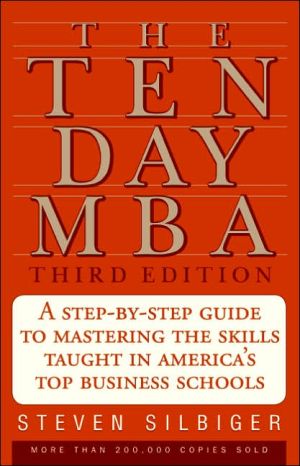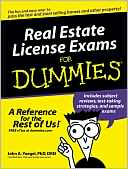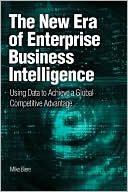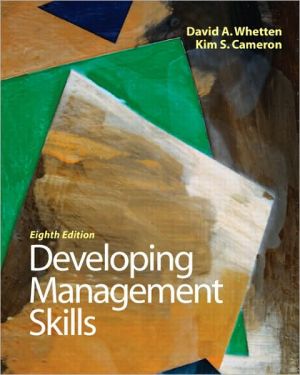Millennium Intelligence: Understanding and Conducting Competitive Intelligence in the Digital Age
Competitive intelligence doesn’t just mean a trip to the local store to see the competition’s finished products—it means gathering business information to gain an advantage in a legal and ethical manner. This book teaches what competitive intelligence is, what a company needs to have a successful intelligence program, where to place an intelligence program, and what sources to use and not use for intelligence. Technology, analysis, and security issues of intelligence are also identified and...
Search in google:
Jerry P. Miller brings together one dozen of the world's leading business intelligence practitioners in this tremendously informative and readable book. Miller and his team of subject experts—dubbed the Business Intelligence Braintrust—provide a fresh, in-depth look at the process variously known as "competitive," "competitor," or "business" intelligence. As the worldwide economy continues to move at warp speed, Millennium Intelligence is the roadmap to success for every businessperson—from the entrepreneur to the Fortune 100 CEO. No other book provides such breadth of coverage on what business intelligence is, and how it must be implemented and managed in today's global digital age. Internet Bookwatch The basics of understanding competitive intelligence in the digital age are revealed in a guide which covers the key issues in competitive intelligence; from accounting models and the technology marketplace to resources for intelligence. Millennium Intelligence provides a basic overview of business intelligence and its management for business managers.
Foreword1Introduction: Competitive Intelligence--No Witchcraft Here, Just Business Savvy3Chapter 1The Intelligence Process--What It Is, Its Benefits, and Current Status9Why Conduct Intelligence?9The Intelligence Process Defined12The Four-Phased Intelligence Cycle14The Various Roles Involved in Conducting Intelligence16The Benefits of the Intelligence Process18The Current Status of the Intelligence Profession22Chapter 2The Birth and Growth of Your Intelligence Process--Behavioral, Cultural, and Structural Factors31How the Intelligence Process Typically Emerges Within a Firm31Behavioral, Cultural, and Structural Issues Critical to Intelligence32The Company that Couldn't Communicate33The Brain Dead Corporation34The Pat Answer Man35Information35Integration36Access37Decision-Making Styles38How to Change Behaviors and Corporate Cultures38Cultural Values to Pursue40Chapter 3Deciding Where to Locate the Intelligence Unit43Determining Factors44Best Practices46Organizational Options47Lines of Reporting: Pros and Cons50The Ultimate Deciding Factor: Where Is Intelligence Necessary for Decision Support?53Chapter 4Skills and Training for Intelligence55Necessary Professional Competencies55Evolution of the Profession56Skills and Sources58Inherent Personal Traits60Training/Education60Experience60Mentors60Different Paths into Intelligence61Curricular Modules for Intelligence Programs62Why Academics Should Teach Intelligence65Training Programs for Intelligence Practitioners66Chapter 5Analytical Models and Techniques69Finding the Focus for Intelligence70Analyzing Your Industry71The "Five Forces" Model71Growth-Share Matrix74Critical Success Factors76Analyzing Your Company78Analyzing Your Competitors79Competitor Profiling79Benchmarking and Gap Analysis80Core Competencies83Patent Citation Analysis86Swot Analysis90Value Chain Analysis92Intelligence and Bean Counting: Analysis and Accounting Models93Activity-Based Costing93Economic Value Management94Summary95Chapter 6Information Resources for Intelligence97General Business Resources98Print: The Traditional Resource98Commercial Online Services: The First Wave of Electronic Resources99The Internet: A Maturing Technology100CD-ROMs: A Price to Be Paid102Company-Specific Resources103Jobs Posting: Window on a Corporate Soul108Industry-Specific Resources109News Resources113International Resources114Government Resources117Patent Resources119Intelligence-Specific Resources120Books About Business and Competitor Intelligence121Strategy-Focused Books122The Road Ahead: A Resource-Rich Future122Primary Research124Interviewing People: Some Basic Rules124The Power of Interviews126People Outside Your Company127Unpublished Documents128Observing Competitors129Chapter 7The Information Technology Marketplace133Key Information System Activities134Outside Printed Information135Internally Available Information137Intelligence Products137Collection and Analysis Activities138Feedback and Archives138Creating and Maintaining Information Balance139Organizational Impact141System Development Guidelines141Technology Options142E-mail143Text143Profiling/Push Technology145Filtering/Agent Technology146Groupware147Document Management147Imaging Software148Analysis and Structure148Portals149Recent Trends Impacting Information Systems149Knowledge Management149Business Intelligence and Document Mining150Internets, Intranets, and Extranets151Summing Up152Additional Resources152Consultants in the Knowledge Management Technology Area152Corporate Knowledge Information Systems Reported in the Press153Software Companies and their Web Sites153Chapter 8Knowledge Management and Intelligence Functions--A Symbiotic Relationship155A Look at Knowledge Management157Core Knowledge Management Processes: Finding Synergies with Intelligence Functions158Identifying Subject Matter Experts158Identifying Sources of Intellectual Capital158Balancing a Need for New Processes with Respect for Organizational Culture158Applying Technology to Support the Process158The Difference Between Knowledge Management and Intelligence160Implementing Intelligence Functions as an Element of Knowledge Management162Developments in Knowledge Management and Intelligence Tools164Basic Functionalities of Knowledge Management Tools164Intelligence Applications Enter the Mainstream165An Inevitable Convergence166Additional Resources168Chapter 9Intelligence and the Law171Part IThe Legal Aspects of Intelligence171Civil Liability for Trade Secret Misappropriation and Related Claims172Background: The Law of Trade Secrets172What Are Trade Secrets?172How Are Trade Secrets Different from Patent and Copyright?173The Basic Rule of Trade Secret Law173What Cannot Be Claimed as a Trade Secret?174Elements of a Trade Secret175Secrecy175Value175Reasonable Efforts by the Owner175Misappropriation176Breach of Confidence176Improper Means (Intelligence vs. Espionage)176Damage Awards and Other Consequences of Litigation177Other Laws That May Apply178Inducement178Fraud178Invasion of Privacy178Unfair Competition179Copyright Infringement179Avoiding Lawsuits: A Checklist for Fair Conduct180Keep Your Ethical Compass180Be Smart Before Sneaky180Keep Thorough Records180If You Stumble on Someone Else's Property, Get Help180Raise Your Standards in High-Risk Situations180Part IICriminal Liability for Trade Secret Misappropriation181An Overview of the Economic Espionage Act (EEA)181Implications of the EEA for Intelligence Professionals185Chapter 10Conducting Intelligence Ethically189Distinctions Between Ethical and Legal Behavior in Intelligence189Guidelines for Business Conduct190Guidelines for the Ethical Collection and Dissemination of Intelligence191Information Gathering Outside the U.S.192Public Information192Information Gathering Methods192Reverse Engineering192Right to Protect Proprietary Information192Responsibility for Agents' Actions193Disclosure and Use by the Firm193Bribery193Trespass193Misrepresentation193Photographs193Questionable Information193Guidelines for the Protection of Trade Secrets and Other Intellectual Property194Intelligence Ethics: Case Histories and Commentary196Case #1The Vendor196Case #2Eavesdropping197Case #3The New Hire198Case #4The Candidate199SCIP Code of Ethics200Summary/Recommendations200Chapter 11Intelligence and Security203Part IIntelligence and Security in Business204The Foundation of Counterintelligence and Security204The Proper Location of the Protection Function206The Protection Process206The Counterintelligence Approach208The Component Parts of the Protection Process210Requirements Definition210Assessing the Competition210Vulnerability Assessment210Countermeasures Development211Analysis212Dissemination212Integration of the Protection Process into the Business Model213The Tools Used in the Protection Process216Part IIOperations Security and Competitive Intelligence Countermeasures219Why Industrial Espionage Is on the Rise219Elements of the Operations Security Process221Identification of Critical Information222Threat Analysis222Vulnerabilities Analysis222Risk Assessment223Applications of Appropriate Countermeasures223Chapter 12Small Business Intelligence--People Make It Happen225How Successful Small Firms Practice Intelligence225Short Case Studies228Northern Light Technology LLC228Ferranti-Dege, Inc.229Circle Z Ranch230Red Storm Entertainment, Inc.231Forrester Research232Infonautics232Emma's Pizza233Texas Nameplate Company, Inc.233Specialty Cheese Company234What You Can Learn from These Small Firms235Chapter 13Millennium Intelligence--The Future239Part IWhere Is the Society of Competitive Intelligence Professionals Going?239Part IIWhere Is the Intelligence Profession Going?243Biographies: The Business Intelligence Braintrust247Bibliography257Index265
\ Internet BookwatchThe basics of understanding competitive intelligence in the digital age are revealed in a guide which covers the key issues in competitive intelligence; from accounting models and the technology marketplace to resources for intelligence. Millennium Intelligence provides a basic overview of business intelligence and its management for business managers.\ \








